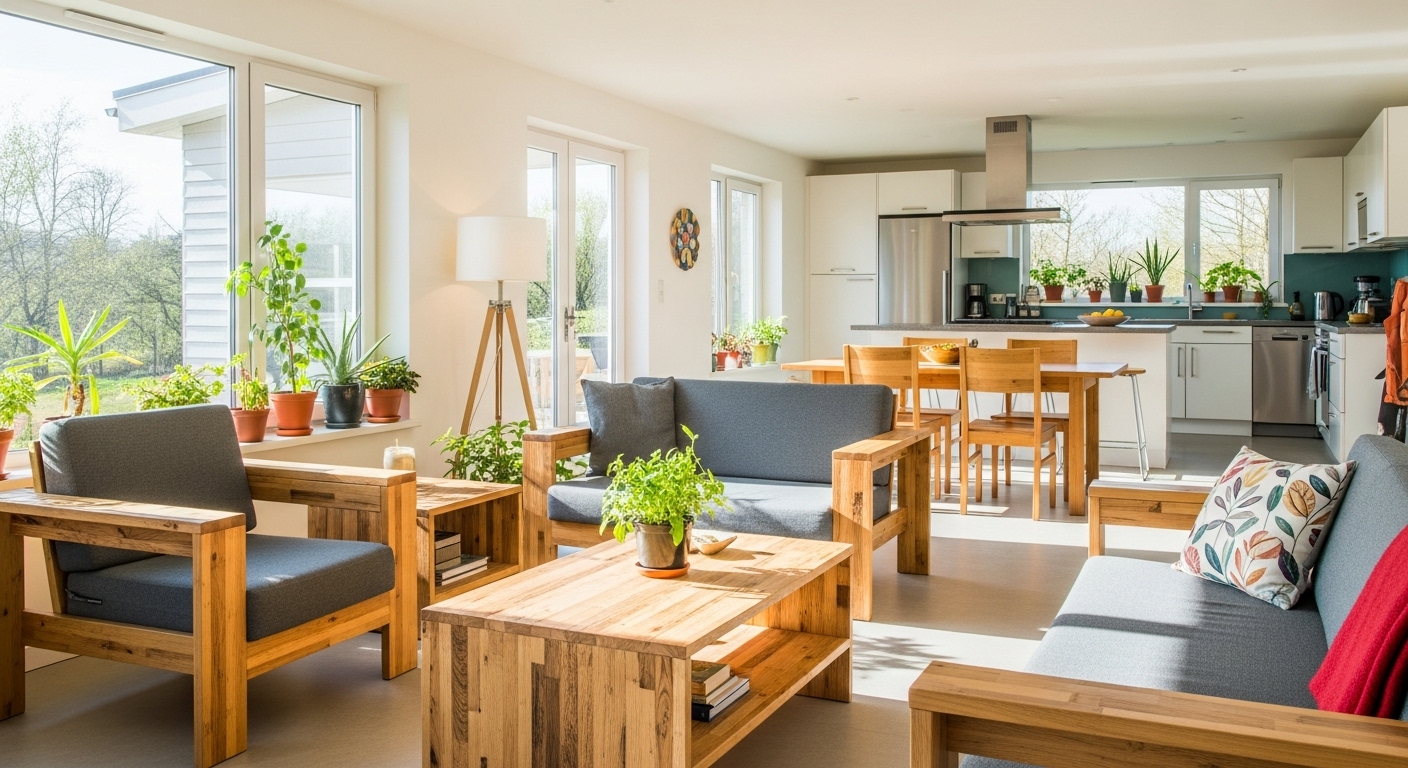In an era where environmental consciousness is no longer a trend but a necessity, transforming your home into a sustainable sanctuary is both a responsible and rewarding endeavor. The concept of a ‘green home lifestyle’ has evolved beyond mere energy efficiency; it encompasses a holistic approach to living that minimizes environmental impact while maximizing comfort and well-being. Recent discussions highlight the importance of sustainable materials, renewable energy sources, and mindful consumption within the home. This blog post delves into essential design tweaks that can help you create an eco-home advantage, fostering a healthier planet and a more fulfilling life.
We will explore innovative ways to incorporate sustainable design principles, from selecting eco-friendly building materials to harnessing renewable energy. We’ll also discuss water conservation strategies, waste reduction techniques, and the importance of indoor air quality. Let’s embark on this journey towards a greener, more sustainable home.
Embracing Sustainable Materials
The foundation of any eco-home lies in the materials used to build and furnish it. Opting for sustainable materials not only reduces your environmental footprint but also enhances the overall health and longevity of your home. Look for materials that are recycled, renewable, or locally sourced. Bamboo, for example, is a rapidly renewable resource that can be used for flooring, cabinetry, and even structural elements. Reclaimed wood adds character and reduces the demand for new timber, while recycled glass countertops offer a stylish and eco-friendly alternative to traditional materials. Consider using natural paints and finishes that are free from volatile organic compounds (VOCs), which can contribute to indoor air pollution.
When selecting furniture, prioritize pieces made from sustainable materials and manufactured using eco-friendly processes. Look for certifications such as the Forest Stewardship Council (FSC) for wood products and the Global Organic Textile Standard (GOTS) for fabrics. By making conscious choices about the materials you bring into your home, you can create a space that is both beautiful and environmentally responsible. Consider cork flooring as well, which is naturally antimicrobial, water-resistant, and provides great insulation.
Another great option is using recycled steel. It is durable, recyclable, and requires less energy to produce compared to new steel. Concrete is another building material that can be made more eco-friendly by using supplementary cementitious materials like fly ash or slag, which are byproducts from other industries. These materials reduce the amount of cement needed, lowering the carbon footprint of the concrete. By making informed decisions about the materials you use, you can significantly reduce your environmental impact and create a healthier, more sustainable home.
Harnessing Renewable Energy
One of the most impactful ways to create an eco-home advantage is by harnessing renewable energy sources. Solar panels are a popular choice, allowing you to generate electricity directly from the sun. While the initial investment can be significant, the long-term savings on your electricity bill, coupled with potential government incentives, make solar energy a worthwhile investment. Consider installing a solar water heater to further reduce your reliance on fossil fuels. Geothermal energy is another option, utilizing the Earth’s constant temperature to heat and cool your home efficiently. While geothermal systems require a larger upfront investment, they offer substantial energy savings and a reduced carbon footprint.
Even if you’re not ready to invest in solar panels or geothermal energy, there are still steps you can take to reduce your energy consumption. Switch to energy-efficient appliances and lighting, and be mindful of your energy usage habits. Unplug electronics when not in use, and use power strips to easily turn off multiple devices at once. Consider installing a smart thermostat to optimize your heating and cooling settings, and take advantage of natural light whenever possible. By making small changes in your daily habits, you can significantly reduce your energy consumption and contribute to a more sustainable lifestyle.
The U.S. Department of Energy offers numerous resources and incentives for homeowners looking to invest in renewable energy. These resources can help you assess your energy needs, compare different renewable energy options, and find financial assistance programs. By taking advantage of these resources, you can make informed decisions about how to best harness renewable energy for your home.
Water Conservation Strategies
Water conservation is an essential aspect of a green home lifestyle, particularly in regions facing water scarcity. Implementing water-saving fixtures and practices can significantly reduce your water consumption and lower your utility bills. Install low-flow toilets, showerheads, and faucets to reduce water usage without sacrificing performance. Consider collecting rainwater for irrigation and other non-potable uses. Xeriscaping, or drought-tolerant landscaping, can minimize the need for irrigation and create a beautiful, low-maintenance yard. Be mindful of your water usage habits, such as taking shorter showers and turning off the faucet while brushing your teeth.
Greywater systems, which recycle water from showers, sinks, and washing machines for use in irrigation or toilet flushing, are another effective way to conserve water. While greywater systems require a more significant investment, they can significantly reduce your water consumption and lower your environmental impact. Consider installing a smart irrigation system that adjusts watering schedules based on weather conditions and soil moisture levels. By implementing these water conservation strategies, you can create a more sustainable home and contribute to the preservation of this precious resource.
Regularly check for leaks in your plumbing system and repair them promptly to prevent water waste. Educate your family members about water conservation practices and encourage them to adopt water-saving habits. By working together, you can create a culture of water conservation within your home and contribute to a more sustainable future.

